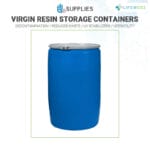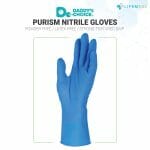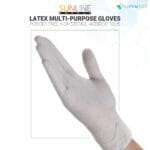What are Disposable Masks?
Disposable masks are single-use protective face coverings designed to prevent the wearer from inhaling or spreading airborne particles, such as dust, allergens, and infectious agents like bacteria and viruses. These masks are widely used in healthcare, industrial, and public settings to reduce the transmission of respiratory droplets and protect against environmental pollutants. Disposable masks are commonly made from multiple layers of non-woven fabric and are designed to be worn for a limited time before being discarded.
Types of Disposable Masks
There are several types of disposable masks, each designed for specific purposes and offering different levels of protection:
- Surgical Masks: These are loose-fitting, three-ply masks that create a barrier between the nose and mouth and the environment. Surgical masks protect against large droplets, splashes, and sprays but offer limited protection against small airborne particles.
- N95 Respirators: N95 masks are tight-fitting masks that filter out at least 95% of airborne particles, including very fine particles like dust, allergens, and pathogens. They provide a higher level of protection than standard surgical masks and are commonly used in healthcare and industrial environments.
- KN95 Masks: Similar to N95 respirators, KN95 masks also filter 95% of airborne particles but adhere to different international standards. These masks are commonly used in public and healthcare settings for respiratory protection.
- Disposable Dust Masks: These lightweight masks are used in construction, cleaning, and industrial environments to protect the wearer from inhaling dust, pollen, and other large airborne particles. They are not designed to protect against viruses or other small particles.
- Face Shields with Disposable Masks: Some disposable masks are used in conjunction with face shields to provide additional protection against large droplets and sprays. This combination is often used in healthcare settings.
How Do Disposable Masks Work?
Disposable masks work by filtering airborne particles through multiple layers of material. The outer layer typically repels moisture, while the inner layers trap small particles and droplets, preventing them from reaching the wearer’s nose and mouth. Some masks, like N95 and KN95 respirators, use electrostatically charged materials that enhance filtration efficiency, making them effective at blocking smaller particles. The fit of the mask plays a crucial role in its effectiveness, with tighter-fitting masks providing better protection.
Benefits of Disposable Masks
- Infection Control: Disposable masks are highly effective at reducing the spread of respiratory droplets, making them essential in preventing the transmission of infectious diseases like COVID-19, influenza, and other airborne illnesses.
- Convenience: Disposable masks are easy to use and can be discarded after a single use, making them a practical option for short-term protection in healthcare, public, and industrial settings.
- Comfort and Breathability: Most disposable masks are designed to be lightweight and breathable, ensuring comfort for the wearer while providing a sufficient level of protection. They are often made from soft, non-irritating materials.
- Affordability: Disposable masks are generally inexpensive and widely available, making them accessible to a broad range of users, from healthcare workers to the general public.
Key Features of Disposable Masks
- Multi-Layer Construction: Disposable masks typically feature multiple layers of non-woven fabric that provide filtration and moisture resistance. Surgical masks, for example, have an outer hydrophobic layer, a middle filtration layer, and an inner soft layer.
- Nose Wire for Better Fit: Many disposable masks come with an adjustable nose wire that helps create a better seal around the nose, improving the overall fit and reducing the risk of air leakage.
- Ear Loops or Straps: Disposable masks are usually secured with elastic ear loops or head straps. These ensure that the mask stays in place while being worn.
- Single-Use Design: Disposable masks are intended for single use and should be discarded after wearing to avoid contamination. Reusing disposable masks can compromise their effectiveness.
- Filtration Efficiency: Masks like N95 and KN95 respirators are rated based on their filtration efficiency, with N95 masks filtering at least 95% of airborne particles. Surgical masks, while less effective for small particles, still provide protection against large droplets and splashes.
Uses of Disposable Masks
- Healthcare Settings: Disposable masks are widely used in hospitals, clinics, and dental offices to protect healthcare workers and patients from the transmission of infectious diseases. Surgical masks are standard in these environments, while N95 respirators are used in high-risk situations.
- Public Spaces: During outbreaks of contagious diseases, disposable masks are used by the general public to reduce the spread of respiratory droplets. They are particularly useful in crowded or enclosed spaces, such as public transportation, grocery stores, and offices.
- Industrial Applications: In construction, manufacturing, and cleaning industries, disposable dust masks protect workers from inhaling dust, dirt, and non-toxic particles. In environments with more hazardous particles, N95 respirators are commonly used.
- Travel: Disposable masks are often worn by travelers, particularly during long flights or in areas with poor air quality, to protect against airborne pollutants and minimize the risk of respiratory infections.
- Food Service: Disposable masks are used in food service settings to maintain hygiene and prevent contamination during food preparation and handling. They help reduce the risk of transmitting bacteria or viruses from workers to food products.
Proper Use and Disposal of Disposable Masks
To ensure the effectiveness of disposable masks, it is important to use them correctly:
- Donning the Mask: Before putting on a disposable mask, wash your hands thoroughly. Place the mask over your nose and mouth, securing it with ear loops or head straps. Adjust the nose wire to fit snugly around your nose and ensure the mask covers your chin.
- Avoid Touching the Mask: Once the mask is on, avoid touching it to reduce the risk of contamination. If you need to adjust the mask, wash or sanitize your hands before and after touching it.
- Replace When Soiled or Damaged: Disposable masks should be replaced if they become damp, soiled, or damaged. Wearing a wet or damaged mask can reduce its protective capabilities.
- Proper Disposal: After use, remove the mask by handling only the ear loops or straps. Dispose of it in a trash bin and wash your hands immediately after removal. Never reuse a disposable mask.
Conclusion
Disposable masks are an essential tool for protecting against airborne particles, whether in healthcare, industrial, or public settings. Their convenience, affordability, and effectiveness in reducing the spread of respiratory droplets make them a key component of personal and public health safety. Proper use and disposal are critical to ensuring that disposable masks provide optimal protection, preventing the spread of infectious diseases and minimizing exposure to harmful airborne particles.
« Back to Glossary Index

















